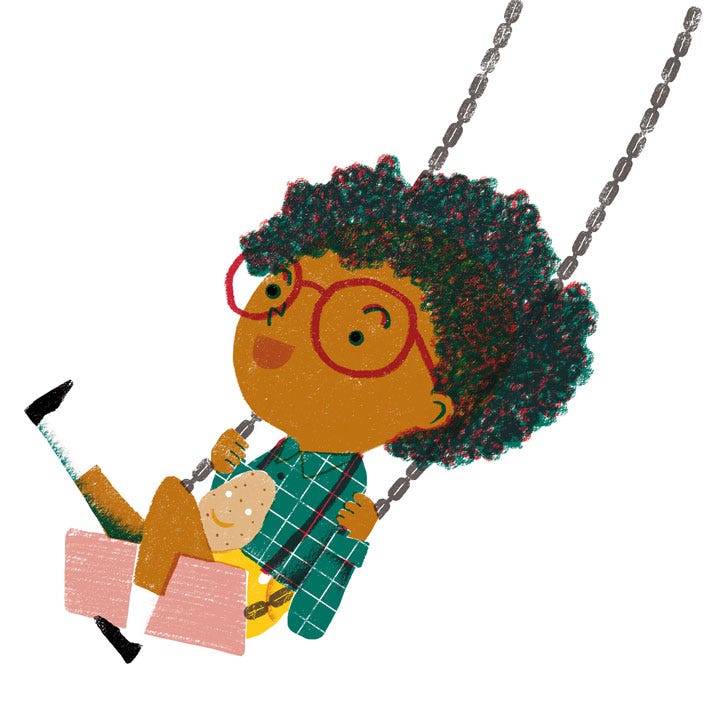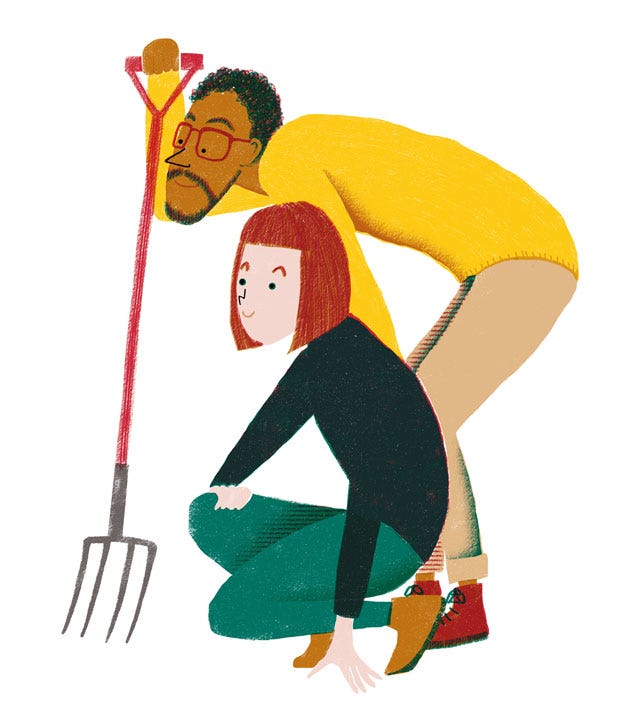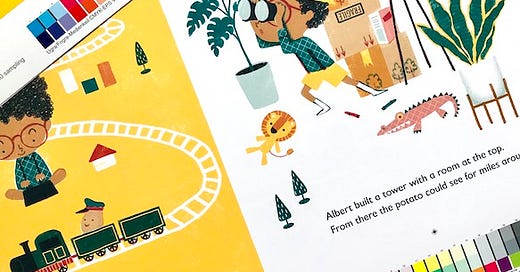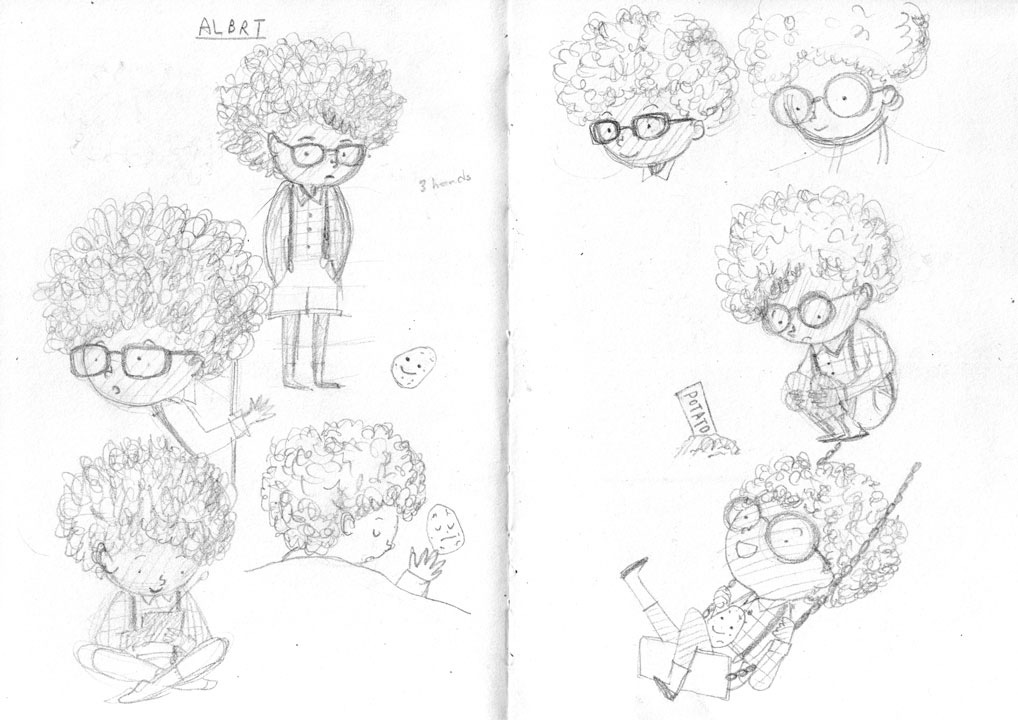Hi! In this post, I’m going to share my creative process of illustrating The Pet Potato by Josh Lacey (Andersen Press).
The Pet Potato is a story about a boy called Albert who is so desperate to get a pet and gets super excited when Dad finally brings a pet home just to find it’s a POTATO! My family always had pets so I never needed to beg for one as a child. But my grandmother taught me to handle inanimate objects with care and respect because all objects had souls. To this day, I have a habit of naming things like my phone and plants and talking to them. So, when I read the Josh's quirky story, I could instantly relate to Albert who gradually got attached to his potato.
I sent some character sketches and colour samples to my editor, art director and Josh. They gave me the thumbs up. That’s how the project started!


After reading a text, character design is the first thing I usually do. There was no physical description of Albert in the text and I was given free rein to design him. Because there was no obvious clue, I had to dig deep into the text. Albert was an only child. He liked reading. He was targeted by a bully. And no mention of his friends. From these clues, I imagined Albert as someone small, smart and introverted but above all with a vivid and unique imagination.
As an East Asian, I do care about diversity in children’s books. But, the main motivations behind the character design were 1) for the previous Andersen book, the main character was a white boy with black hair (to resemble a penguin chick) so I wanted to do something different to expand my portfolio; 2) I was binge-watching IT Crowd and I had a bit of a crush on Richard Ayoade. I thought mini Richard with Albert Einstein-like fluffy hair would be perfect for my introverted and imaginative Albert!
The story is set in a realistic world so I didn’t want to anthropomorphise the potato too much like Supertato with big eyes and limbs. Instead I wanted something more subtle like the face on the moon. Throughout the book, you would notice only Albert sees the face on the potato because it’s in his imagination.







